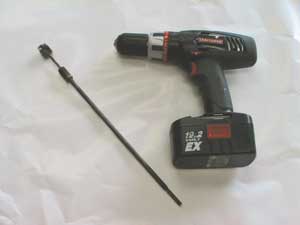
This North Louisiana lake is a jungle of standing timber, but it offers anglers solitude and plenty of bass action.
I was recently writing a repair order for a customer’s boat. The steering system was frozen, and the customer could not understand how that had happened.He was very particular about maintaining his rig. He performed annual tune-ups. He changed the oil in his lower unit, and he regularly greased all of the pressure fittings on the engine, especially the grease fitting on the steering tube.
I explained that the steering tube performs two duties for the engine. The first is to act as a mounting location for the steering cable. The second is to act as a pivoting hinge for the engine to tilt up and down on.
The grease fitting on the outside of the engine only greases the outside of the steering tube so that the engine will tilt up and down freely. This grease fitting does absolutely nothing for the steering cable that passes through the inside of the tube.
I also explained that to the best of my knowledge there is not a single engine manufacturer who makes any allowance for lubrication of steering cables on their engines. Because there is no way to lubricate the cable, eventually dirt and corrosion begins to build up inside the steering tube until the cable is completely seized up inside the tube.
“What can be done to correct this problem, and can it be avoided in the future?” my customer asked.
I explained that we would have to remove the engine from his boat and drive the frozen cable out of the steering tube. Once the cable had been removed, it would be thoroughly cleaned and polished. After cleaning we would then try turning the steering wheel to see if the cable was O.K. or if it was also damaged by the corrosion.
Most steering cables can be saved by cleaning and polishing, but when we cannot save the cable, we have to replace the entire steering system in the boat.
After the cable is taken care of, we then turn our attention to the steering tube. The dirt and corrosion has to be removed before the cable can be installed back into the tube.
We have a simple tool for this function — a wire brush mounted on a long metal shaft. We chuck this wire brush into an electric drill, and use it to polish and clean the inside of the steering tube. Depending on how badly the corrosion and dirt had built up, it may take several minutes of polishing with this wire brush to properly clean the tube. We had one engine that was so badly corroded we wore out three wire brushes polishing the tube clean.
Once we have corrected the problem, we can look into preventing it from happening again. There is a product that was developed by a man from down in the bayou country of South Louisiana called Cable Buddy. It installs on the steering tube, and the customer can then lubricate his steering cable using the special oil that is supplied with the product.
One of the nicest things about the Cable Buddy is that it retails for about $30, and it installs in less than 5 minutes while we are working on the steering tube. By keeping the cable lubricated with this oil, you can virtually eliminate corrosion troubles.
Cable Buddy does not fit every engine on the market but for the ones that it does fit, it is a valuable asset. If you have one of the engines that Cable Buddy does not fit, there may be other similar products you can use to prevent steering tube corrosion. Check with your local dealer for his recommendations.
Have a great summer on the water, and don’t catch all the fish. Leave one or two for me.
If you have any questions or problems you would like to discuss about your boat, motor or trailer, you can reach me at hanktheboatdr@yahoo.com, or if you need other contact information, you can find my complete listing on my web site: www.theboatdr.com.


